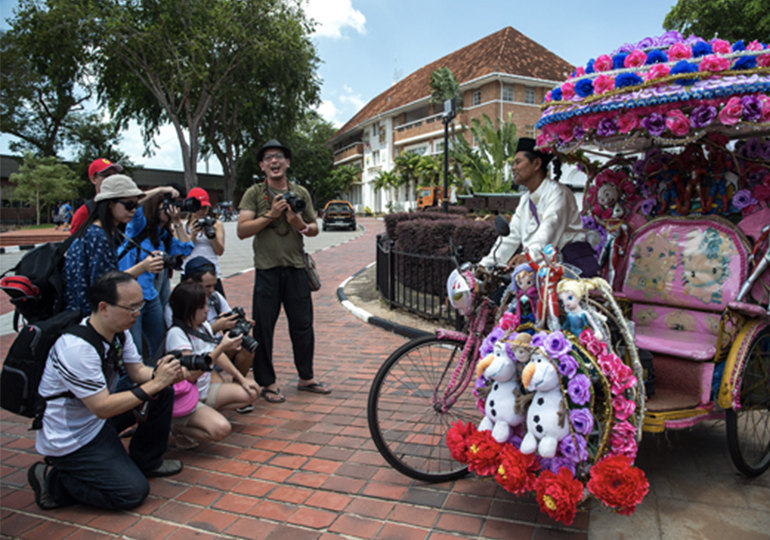
Sign up online for one of our free courses about compact cameras at the Canon Imaging Academy.
Learn how to use the most important functions of your camera in two hours.
Hone your photography skills or stretch them further at our themed workshops and outings. We have created a variety of workshops and outings that suit all photographic levels from the amateurs to the professionals.
Choose any theme that calls out to you, and there's also a chance to shoot overseas

What to look for when buying a digital camera?
Traditional camera uses film to record images. But for digital camera, the film is replaced by a small sensor chip – either CCD (charged Coupled Device) or CMOS (Complementary Metal Oxide Semiconductor) – which stores the image into a digital format.
The CCD or CMOS sensor's surface is divided into tiny squares called pixels and each pixel records one segment of an image. The more pixels a sensor has, the more details it can record. While it's true that the number of pixels a CCD contains is an excellent measure of the details the digital camera can contain, this is not enough.
Picture quality doesn't necessarily improve with another million pixels. Other features such as lens, colour filter used on the sensor and digital image processor also play an important role in determining picture quality.
(See picture below to understand the intricacies of a digital camera in the analogy of a human eye).

To capture an image, lights first have to go through the lens (equivalent to human's eye) which are later gathered as electrical charges by the sensor (equivalent to human's retina). The sensor, by itself, is incapable of perceiving colours, so it obtains colour data via a colour filter arranged above individual pixels. Image data gathered by the sensor is converted into digital signals to be analysed and processed by the image processor (equivalent to human's brain) before recording the image onto a memory card. Each process is crucial in determining image quality.
So don't just be deceived by pixel count. Check for manufacturer's lens and CCD.
Compose your picture using the LCD first.
Firstly, identify the subject that you are interested to emphasize. Next compose your picture using the LCD. Ensure that only the things you want viewer to see appear in the LCD screen. If you are taking a moving object, always leave enough space in front of the subject so that it appears to be moving into the picture. Now take the shot and you'll end up with your full image size 'framed' the way you like it. If you are not happy with the composition, reshoot it.
Ensure that there is sufficient light in the background.
Make sure that the automatic flash function is working when using a snap happy camera. If you are using a camera with creative controls, there are several ways to overcome the lighting conditions during your filming.
You could slot in different types of flashes according to the lighting conditions.
Adjust the aperture setting /speed to allow more/less light to enter the camera.
For night filming, you can adjust the ISO setting ranging from 100 to 400.
Use exposure compensation mode if there is a strong light coming from the back of the subject.
Resolution is the measurement of an image in pixels. Since the maximum available resolution of an image is only getting higher, digital cameras use a process known as 'Compression' to reduce the size of the image to a manageable size before it is stored. While this dramatically increases the amount of pictures you can store on each memory card, there is a trade off in quality.
Pending your usage of the images, the table below is a suggested guide.
| Usage of images | Suggested Resolution | Suggested Compression Mode |
| Low - Medium | Normal | |
| Printing people/portraits | Large | Fine/Superfine |
| Printing building/scenery | Large | Normal |